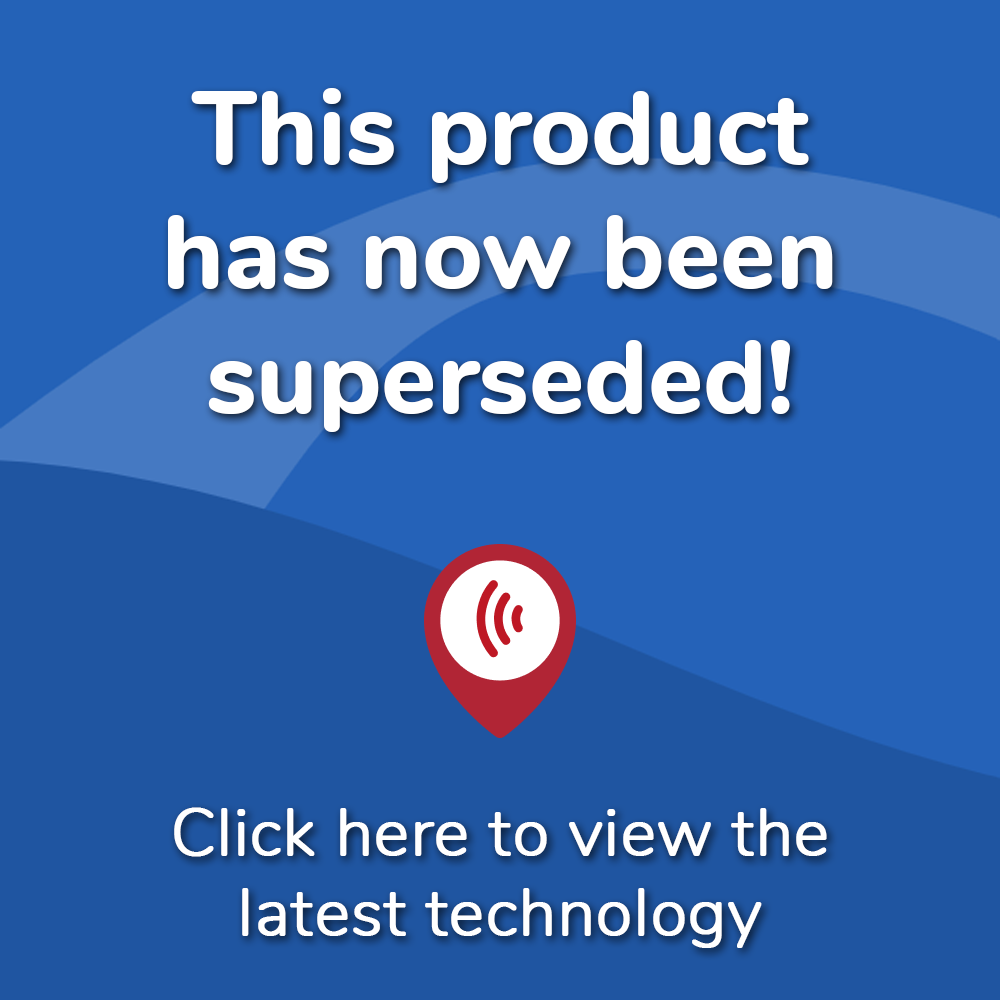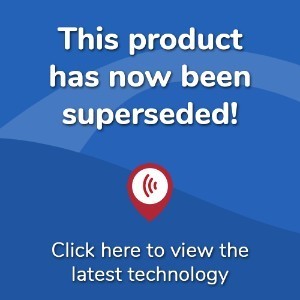WARNING DISCONTINUED Newer Phonak Models Available

What's included in our hearing aid prices?
Details & Features
Update: This Phonak product is now discontinued, view the latest Phonak hearing aids here
July 2016 update – The Phonak Venture range has now been fully reviewed. Please scroll down to “Phonak Venture – reviews by audiologists” for further details.
The Phonak Audeo Venture V30 contains the lower level of technology in the Audeo range with 8 sound processing channels and a range of programs and features to help you to hear in different situations without breaking your budget.
Despite the lower cost, the V30 still contains Phonak’s Binaural VoiceStream TechnologyTM which makes it possible to transmit a stronger speech sound heard in one hearing aid to the other side, giving you better speech clarity when it would otherwise be difficult to follow the conversation.
The V30, like others in this Phonak range, is a Receiver In Canal (RIC) hearing aid. It has a small case which houses the sound processor, which sits behind the ear whilst the sound receiver is in the ear canal. The exterior of the case is dustproof and water repellent to ensure it stays in good working order.
It is available in a wide colour range allowing you to show it off as a bright and fun fashion accessory or let it blend in with your skin or hair colour.
There is a mix of automatic and manual programs so you can have control over your hearing settings in different environments.
These programs include:
Speech in Noise
This program changes the directional microphones to focus on the sound in front of you, making it easier to hear someone when you turn to face them. It also reduces the volume of sound behind you as the microphones are pointing the other way.
Calm Situation
This program makes small adjustments to your hearing to ensure better listening comfort in quiet environments. This is designed for better speech clarity when you are having one to one conversations.
UltraZoom
The directional microphones are designed to pick up speech sound from all around you. This program gives the wearer control over the directional microphones, allowing them to narrow the beam of focus for their hearing to one small area. This is ideal for social occasions or situations where you want to listen to one person speaking in a crowded or noisy place.
SoundRecover
High-frequency hearing loss is common, particularly in age-related hearing loss. This program is designed to reproduce the difficult to hear sounds within your hearing range. This makes voices, such as those of women and children, much easier to hear and understand.
QuickSync
This program allows the hearing aids to synchronise whenever you change the volume or settings on one hearing aid. This means that you don’t have to fiddle around to get them on the same setting and ensures that they are always working together to give you the best hearing clarity.
Whistleblock
This program is designed to eliminate the annoying whistle of feedback before you even hear it. It can pick out the feedback sound from other noises around you ensuring that there is no distortion of the sounds you want to hear.
NoiseBlock
Continuous background noise, such as kitchen appliances or office equipment, can make it difficult to hear conversations. This can be particularly problematic in the workplace. Rather than amplifying all the sounds around you, this program recognises and lowers the volume of the background noise, allowing you to focus on voices and follow the conversation.
Tinnitus Balance Noise Generator
This program uses sound distraction techniques to help improve the symptoms of tinnitus or ringing in the ears. By generating various sounds it helps the mind to focus on sounds outside the ear instead of the internal ringing noise.
The V30 is compatible with Phonak’s range of accessories.
These include the Phonak ComPilot which can stream sound wirelessly to your hearing aids from multimedia devices such as your Smartphone, music player or computer. This allows you to make hands free phone calls and interact via Skype or face time as well as listen to music.
The ComPilot works with Phonak’s mini microphone, which can help you to hear a speaker in a noisy or challenging environment, such as a lecture hall. Simply give the microphone to the person you need to hear and their voice will be streamed directly to your hearing aids. It also works with the TV Link allowing you to stream the sound from the television to your hearing aids at a volume to suit you without disturbing anyone else.
Naida
The Naida V was released 18 months after the Venture series first appeared. The Naida comes in several shapes from the smaller RIC up to the larger superpower BTE shape. It offers a number of additional benefits over the original models in the V series, the Bolero and Audeo.
- It is water-resistant down to one meter depth for up to 60 minutes and has an IP68 rating for water and dust resistance. Not suitable for swimming, however.
- It’s made from a glass fibre material 60% tougher than the usual hearing aid shell materials.
- The Naida’s are suitable for the whole range of hearing losses from mild to profound.
The Phonak Venture Range Brochure
Our specialist service includes:
Do not spend hundreds of pounds without getting a second opinion from us.
Please call us on 0800 567 7621
 Not only are the prices great, but the service is fantastic! Many thanks to your team.
Not only are the prices great, but the service is fantastic! Many thanks to your team.View our customer reviews below
Phonak Venture – reviews by audiologists
The Phonak Venture or “V series” hearing aids were released back in January of 2015. As to why we are reviewing a hearing aid range that has been around for 18 months, the Phonak Venture aids are still highly relevant in our opinion due to the enduring popularity of the Phonak brand. In addition, we are not expecting any new Phonak ranges to be out in the near future. Therefore, as part of our new reviewing strategy, we have polled our entire network of independent audiologists to see what they thought.
The audiologists were asked to rate on a scale one to five stars, each of the four Venture models, the V90, V70, V50 and V30. Comparing them not to each other, but to the expectations, one should have about each particular aid when judged against other hearing aids in the market.
They were also invited to write their opinions which we have included below. Where an audiologist has mentioned other hearing aids by another manufacturer, we have blanked out that information. This is simply because we wanted a balanced review discussing the merits of these particular hearing aids rather than a forum for promoting one product over another.
For each of the ranges, V90, V70, V50 and V30 there are a number of other names attached including Audeo, Virto, Bolero and Nano. These refer to the physical appearance of the aid rather than the technology inside it.
Star ratings
- Phonak V90 was rated five stars
- The V70 was rated four stars
- The V50, two stars
- The V30 one star
Conclusion
Our audiologists seem to generally like the Phonak Venture series though most rate the “over the ear” versions (Audeo, Bolero) more highly than the in-ear variants, the Virto and Nano. As you will read below some audiologists have a variety of minor issues with the aids but nothing at all that stands out as a persistent or irreconcilable problem.
Audiologists reviews
I’m not the best at writing reviews, hope this helps! Yes, we fit Phonak Venture hearing aids and have done so since they were launched. We find them to be a high-quality product that is very reliable and the sound quality is second to none.
We fit all Venture models depending on the customers budget and find that the V70 and V90 deliver the best results. Currently, we find Phonak superior to any other manufacturer and the number of hearing aids returned by customers is less than 1%, which is fantastic.
Source – Audiologist in Wales.
I have only fitted about 10 pairs of the V range. There appears to be good acceptance and clear sound. Build quality is typically good and durable. Patients could see improvement over previous Phonak aids. Have had no disappointments yet. However, the {other manufacturer aids} are more powerful and have a more versatile fitting range than the Unitron/Phonak.
Source – Audiologist in London.
Plenty of Phonak V90 + V70 fitted, excellent. No returns. Limited amount of V50 + V30 fitted, not great. None returned but lower user satisfaction and more {bleep, language} about required to achieve a reasonable fitting acceptance.
Source – Audiologist in Yorkshire.
Well generally Phonak are superb, but a little tinny for some people. I prefer to use the Audeo V50 on most patients as the V90 can ‘fluctuate’ in very noisy places, perhaps making too many alterations in some environments. The backup service from Phonak is very good, but it is obvious that they are very busy.
Source – Audiologist in Yorkshire.
My experience with Phonak V products has been good. In particular, the top of the range V90 RIC has been very well received. My one concern is that the feedback manager on open fits with a pronounced slope has been compromised by the ‘overzealous’ feedback manager. Yes, it works very well, but at the cost of high-frequency amplification. There is no semi-open/tulip dome available, only open or closed. Where there is a marked low frequency than this, of course, need not be a problem.
Source – Audiologist in Scotland.
I’ve fitted many of the Phonak Venture hearing aids and had really good results with them. The Audeo’s have been the most successful, I’ve fitted at least 100, mainly V90’s and I would say most customers have been happy, I’ve had very few returns. The accessories play an important part in fitting as most clients are really impressed when they try the phone or TV package. Virto V’s are not quite as successful. They tend to be big and don’t have a small enough remote unless the client purchases a Compilot. The wireless CIC’s (Nano’s) tend to be massive.
I hope this is helpful please let me know if you require any further information.
Source – Audiologist in the North West.
I have fitted V90’s and V50’s mainly. Found that the v90 was at its best when it had been released, however, after 4 months they released an update which for some reason affected the sound quality negatively. Still a good aid though.
Source – Audiologist in the Midlands.
We have fitted many Phonak V90 through all the range, Nano to Audeo. We mainly fit top range but we have had good results with the V70 and the V50, these are hearing aids that clients do not need to fiddle with, the automatic features are really good. The downside is having to wear the ComPilot for streaming, most do not like the idea, the ComPilot Air is another option and means that you do not need the neck loop, but you still have to clip it to your person and it needs to be within 12-8″ of the aids. The Phonak V90 is a great aid but would be better if it had the blue tooth connectivity without a ComPilot.
Source – Audiologist in the South East.
I have fitted all of the Phonak V90,70,50 and 30 RICs (Audeo’s) and they are good hearing aids. I have not fitted many of the in the ear aids apart from the Nanos which fit well but don’t have any user controls. Cosmetically the Audeo’s are very good and the fit is usually good and the volume button on the aid is useful. Hearing in noise is good but not the best and the feedback system is not great so some loss of clarity is measurable compared to other aids. Direct connectivity to phones/streaming is not available so you have to use a device worn around the neck or now the new Compilot air which sits in the shirt pocket.
Source – Audiologist in Sussex.
Phonak V90 Nano, aids were made wrong, then the new ones were too big for the customer, poor customer services from Phonak, Returned for refund.
Source – Audiologist in Staffordshire.
I haven’t dispensed many of these aids, the few I have done have been OK. 1 pair V90 and 1 pair V30.
Source – Audiologist in the Essex.
What's included in our hearing aid prices?
If you are looking at this page then it is likely that an audiologist has suggested that you purchase this particular hearing aid, so is this the best model for you?
In general, any audiologist will always recommend to you the model that best suits your needs. Here is a useful checklist to make sure that is the case.
- Audiologist level of knowledge: The audiologist you have seen will hopefully have a wide knowledge of all available hearing aids, however, some will only be familiar with a small number of brands and therefore may not really be in a position to know which model is the best for you. It is OK to challenge their recommendation and ask them to justify why this particular brand is the one for you.
- Do research: Read about the hearing aid that was recommended. Does it seem like it will suit your lifestyle? Does it have more or fewer features than you need?
- Be aware of sales targets: Many high street retailers have specific tie-ins to a particular manufacturer/brand. The hearing aid they have suggested may still be the correct one for you, but do your research so that you know why they might have recommended it.
If in doubt, feel free to give us a call. That's what we're here for. In the meantime, read all about our review of the best hearing aids for 2025 here
If you have significant hearing loss in both ears, you should be wearing two hearing aids. Here are the audiological reasons why:
Localisation: The brain decodes information from both ears and compares and contrasts them. By analysing the minuscule time delays as well as the difference in the loudness of each sound reaching the ears, the person is able to accurately locate a sound source. Simply put, if you have better hearing on one side than the other, you can't accurately tell what direction sounds are coming from.
Less amplification is required: A phenomenon known as “binaural summation” means that the hearing aids can be set at a lower and more natural volume setting than if you wore only one hearing aid.
Head shadow effect: High frequencies, the part of your hearing that gives clarity and meaning to speech sounds, cannot bend around your head. Only low frequencies can. Therefore if someone is talking on your unaided side you are likely to hear that they are speaking, but be unable to tell what they have said.
Noise reduction: The brain has its own built-in noise reduction which is only really effective when it is receiving information from both ears. If only one ear is aided, even with the best hearing aid in the world, it will be difficult for you to hear in background noise as your brain is trying to retain all of the sounds (including background noise) rather than filtering it out.
Sound quality: We are designed to hear in stereo. Only hearing from one side sounds a lot less natural to us.
Fancy some further reading on this topic? You can read about why two hearing aids are better than one in our article, hearing aids for both ears, here
For most people, the main benefit of a rechargeable hearing aid is simple convenience. We are used to plugging in our phones and other devices overnight for them to charge up. Here are some other pros and cons:
For anybody with poor dexterity or issues with their fingers, having a rechargeable aid makes a huge difference as normal hearing aid batteries are quite small and some people find them fiddly to change.
One downside is that if you forget to charge your hearing aid, then it is a problem that can't be instantly fixed. For most a 30-minute charge will get you at least two or three hours of hearing, but if you are the type of person who is likely to forget to plug them in regularly then you're probably better off with standard batteries.
Rechargeable aids are also a little bit bigger and are only available in Behind the Ear models.
Finally, just like with a mobile phone, the amount of charge you get on day one is not going to be the same as you get a few years down the line. Be sure to ask what the policy is with the manufacturer warranty when it comes to replacing the battery.
Looking for more information on rechargeable hearing aids? Read our dedicated page on the topic here
For most people, the answer is yes. But it's never that simple.
The majority of hearing problems affect the high frequencies a lot more than the low ones. Therefore open fitting hearing aids sound a lot more natural and ones that block your ears up can make your own voice sound like you are talking with your head in a bucket. Therefore in-ear aids tend to be less natural.
However the true answer is we can't tell until we have had a look in your ears to assess the size of your ear canal, and until we have tested your hearing to see which frequencies are being affected.
People with wider ear canals tend to have more flexibility, also there are open fitting modular CIC hearing aids now that do not block your ears.
There is also the age old rule to consider, that a hearing aid will not help you if it's sat in the drawer gathering dust. If the only hearing aid you would be happy wearing is one that people can't see, then that's what you should get.
Most people can adapt to any type of hearing aid, as long as they know what to expect. Have an honest conversation with your audiologist as to what your needs are.
Generally speaking, six or more. Unless it's none at all.
The number of channels a hearing aid has is often a simplistic way an audiologist will use to explain why one hearing aid is better than another, but channels are complex and it is really not that straightforward. Here are some reasons why:
Hearing aids amplify sounds of different frequencies by different amounts. Most people have lost more high frequencies than low and therefore need more amplification in the high frequencies. The range of sounds you hear are split into frequency bands or channels and the hearing aids are set to provide the right amount of hearing at each frequency level.
Less than six channels and this cannot be done with much accuracy, so six is the magic number. However, a six channel aid is typically very basic with few other features and is suitable only for hearing a single speaker in a quiet room. The number of channels is not what you should be looking at, it's more the rest of the technology that comes with them.
As a final note, different manufacturers have different approaches. One method is not necessarily better than any other. For example, some manufacturers have as many as 64 channels in their top aids. Most tend to have between 17 and 20. One manufacturer has no channels at all.
Hearing aids are easily lost, misplaced or damaged and typically are one of the most expensive personal possessions an individual can own. We offer hearing aid warranty coverage for £80 per year per aid. Find out more about this service we provide here
All our audiologists use the very latest technology and provide the full range of tests to accurately measure your hearing for free. Find out about what hearing healthcare services we offer all our customers here
Hearing Aid UK offers all their customers free home visiting services, even in a care home environment, for no extra cost. Including hearing tests, fittings, maintenance, check-ups and much more in the comfort of your own home and at your convenience. Find out more information about our home visits here
Here, at Hearing Aid UK, we are dedicated to offering low hearing aid prices. We achieve this by having no head office and low marketing costs. Our hearing aid prices are amongst the lowest you will find anywhere in the world. Explore our prices, brands, and models here
Ask the Experts
6 Morton Lane
Walkwood
Redditch
Worcestershire
B97 5QA
Latest Launch
When we refer to a product as 'Latest Launch', we mean it is the latest to be released on the market.
New
When we refer to a product as 'New', we mean that the product is the newest hearing aid model on the market.
When we refer to a product as 'Superseded', we mean that there is a newer range available which replaces and improves on this product.
Older Model
When we refer to a product as an 'Older Model', we mean that it is has been superseded by at least two more recent hearing aid ranges.



